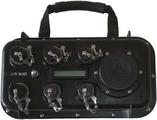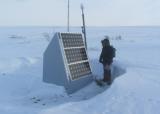
Dear EPIC Users:
This note is to alert all past and current users of RefTek RT130 hardware that these instruments have been experiencing GPS failures in-field. To date, the failures are geographically confined to East Africa and symptoms include intermittent or total loss of timing.
It is worth noting that in reviewing close to two years of repair records, 1303 GPS have been returned to PIC from 69 experiments, excluding those in East Africa, and the total number of GPS units that needed any type of maintenance or repair was 30. There is no evidence at this time that there is a global problem with our RefTek GPS.
We are recommending that all users of EPIC RefTek RT130 dataloggers review their data and log files for signs of GPS failure that are consistent with the failures seen in East Africa. To identify failure behavior please visit this page for a brief tutorial. If you identify failures in your data, please contact passcal [at] passcal [dot] nmt [dot] edu and include "RT130 GPS failure" in the subject line and unit serial numbers in the body of the email.










